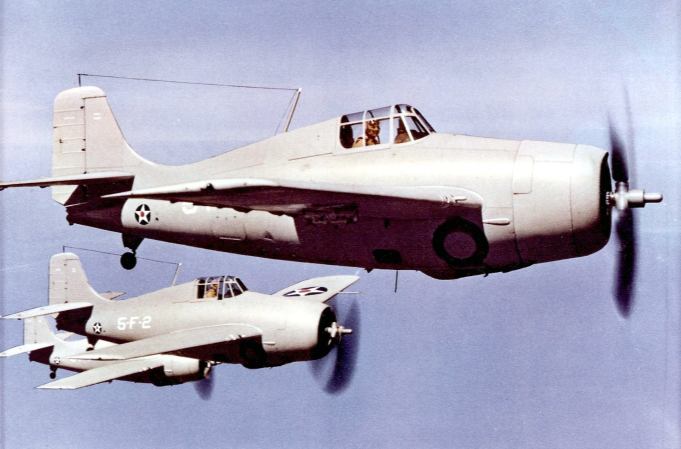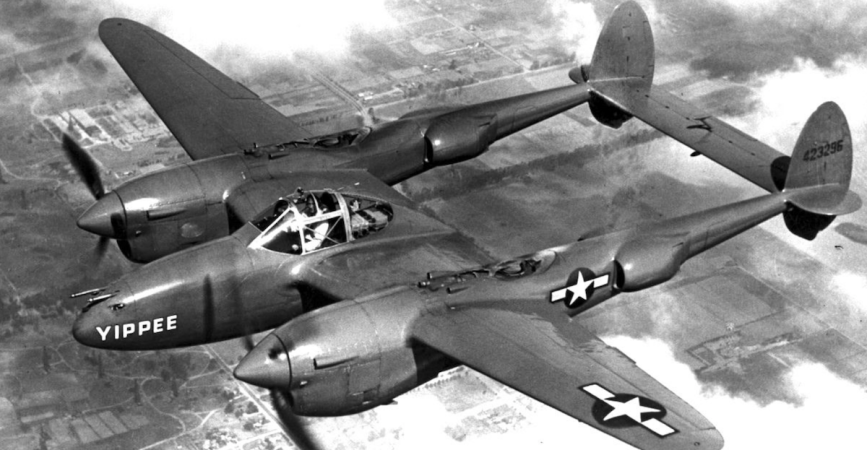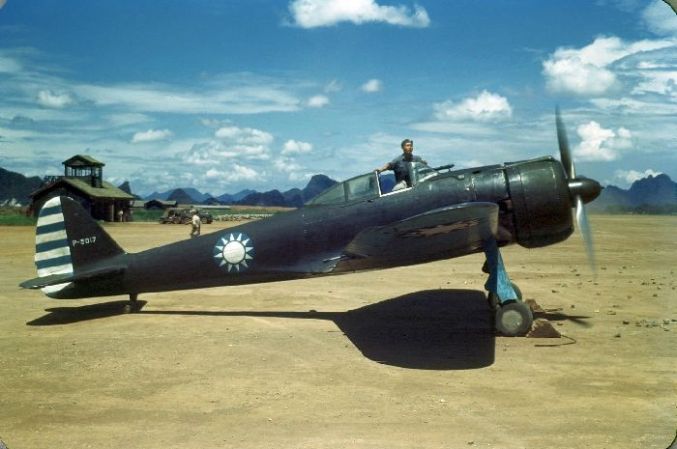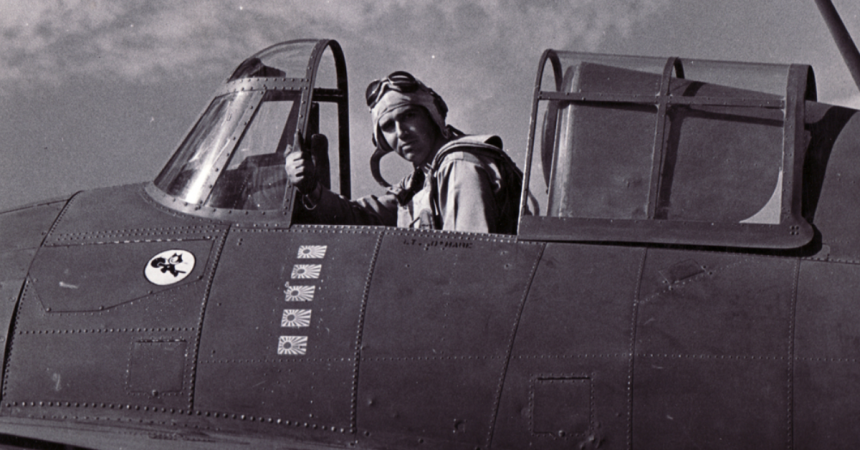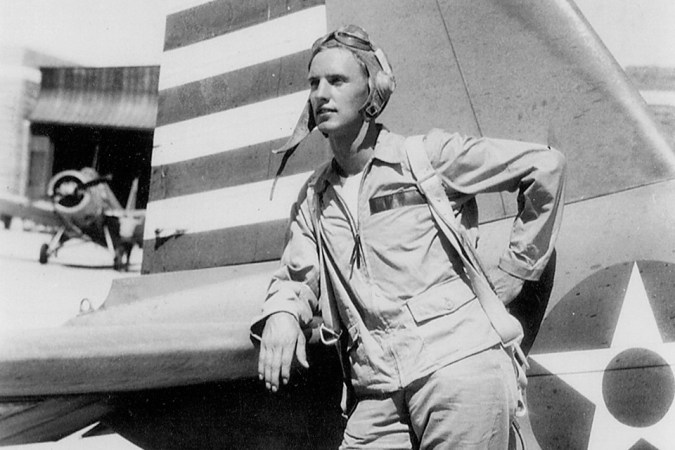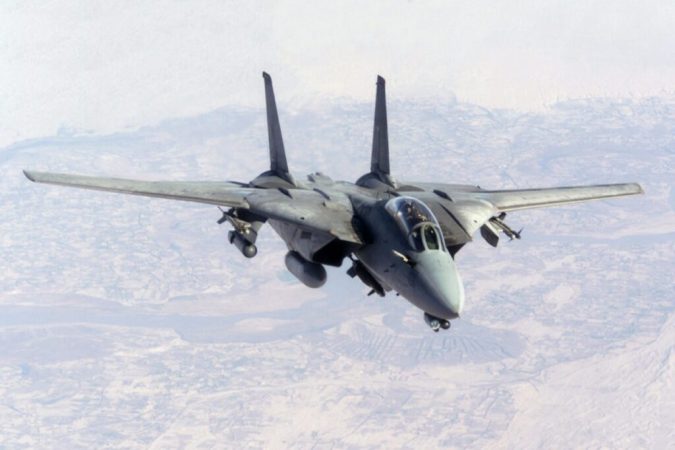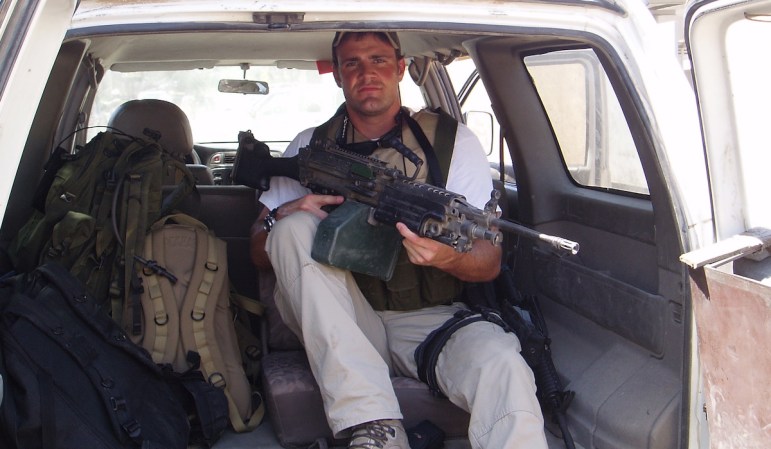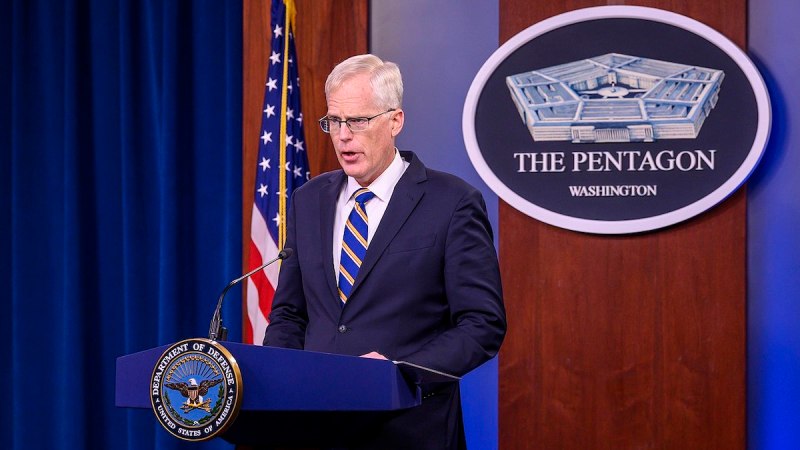When Japan introduced the Mitsubishi A6M Zero, it gained a remarkable plane that racked up an impressive combat record through 1941. However, despite its incredible performance for the time, the Zero couldn’t hold up.
The Grumman F6F Hellcat achieved fame as a Zero-killer after it was introduced in 1943. But it was its predecessor, the Grumman F4F Wildcat, that held the line during the first campaigns of World War II.
So, how did the Wildcat match up so well against the fearsome Zero? First, it’s important to understand that a big part of the Zero’s reputation came from racking up kills in China against a lot of second-rate planes with poorly-trained pilots. After all, there was a reason that the Republic of China hired the American Volunteer Group to help out during the Second Sino-Japanese War – Chinese pilots had a hard time cutting it.

The Mitsubishi A6M Zero had racked up a seemingly impressive record against second-rate opposition.
(U.S. Navy)

A damaged F4F Wildcat lands on USS Enterprise (CV 6) during the Battle of Santa Cruz. Japanese pilots would put hundreds of 7.7mm machine gun rounds into a Wildcat to little or no effect.
(U.S. Navy)
But, believe it or not, the Wildcat almost never made it to the field. The original F4F Wildcat was a biplane that lost out to the Brewster F2A Buffalo in a competition to field the next carrier-born fighter. Grumman, unsatisfied by losing out a contract, pitched two upgraded designs, and the F4F-3 was finally accepted into service. It was a good thing, too. As it turned out, the Brewster Buffalo was a piece of crap — whether at Midway or over Burma, Buffalos got consistently fell to Zeros, costing the lives of Allied pilots.
When the F4F faced off with the Zero, however, it proved to be a very tough customer. A Zero’s armament consisted of two 7.7mm machine guns and two 20mm cannon. The former had a lot of ammo, but offered little hitting power. The latter packed a punch, but the ammo supply was limited. As a result, in combat, many Japanese pilots would empty their 7.7mm machine guns only to see the Wildcat was still flying.
By contrast, the Wildcat’s battery of four to six M2 .50-caliber machine guns brought not only hitting power to bear against the lightly armored Zero, but also came with an ample supply of ammo. Stanley “Swede” Vejtasa was able to score seven kills against Japanese planes in one day with a Wildcat.
But ammo wasn’t the only advantage. Wildcat pilots had an edge in terms of enemy intelligence thanks to the discovery of the Akutan Zero, a recovered, crashed Zero that gave the U.S. insight into its inner-workings (this vessel made a cameo in a training film featuring future President Ronald Reagan).
Learn more about this plane that held the line against the odds in the video below.



